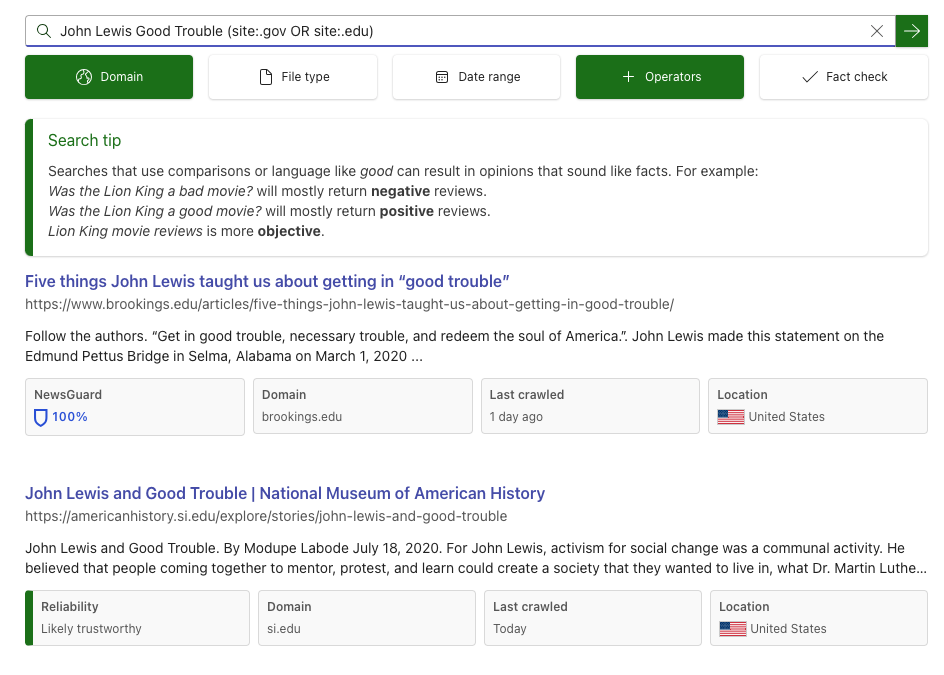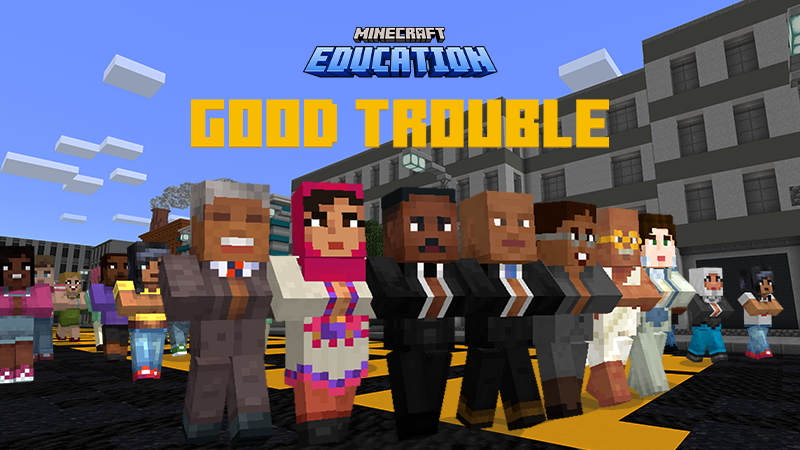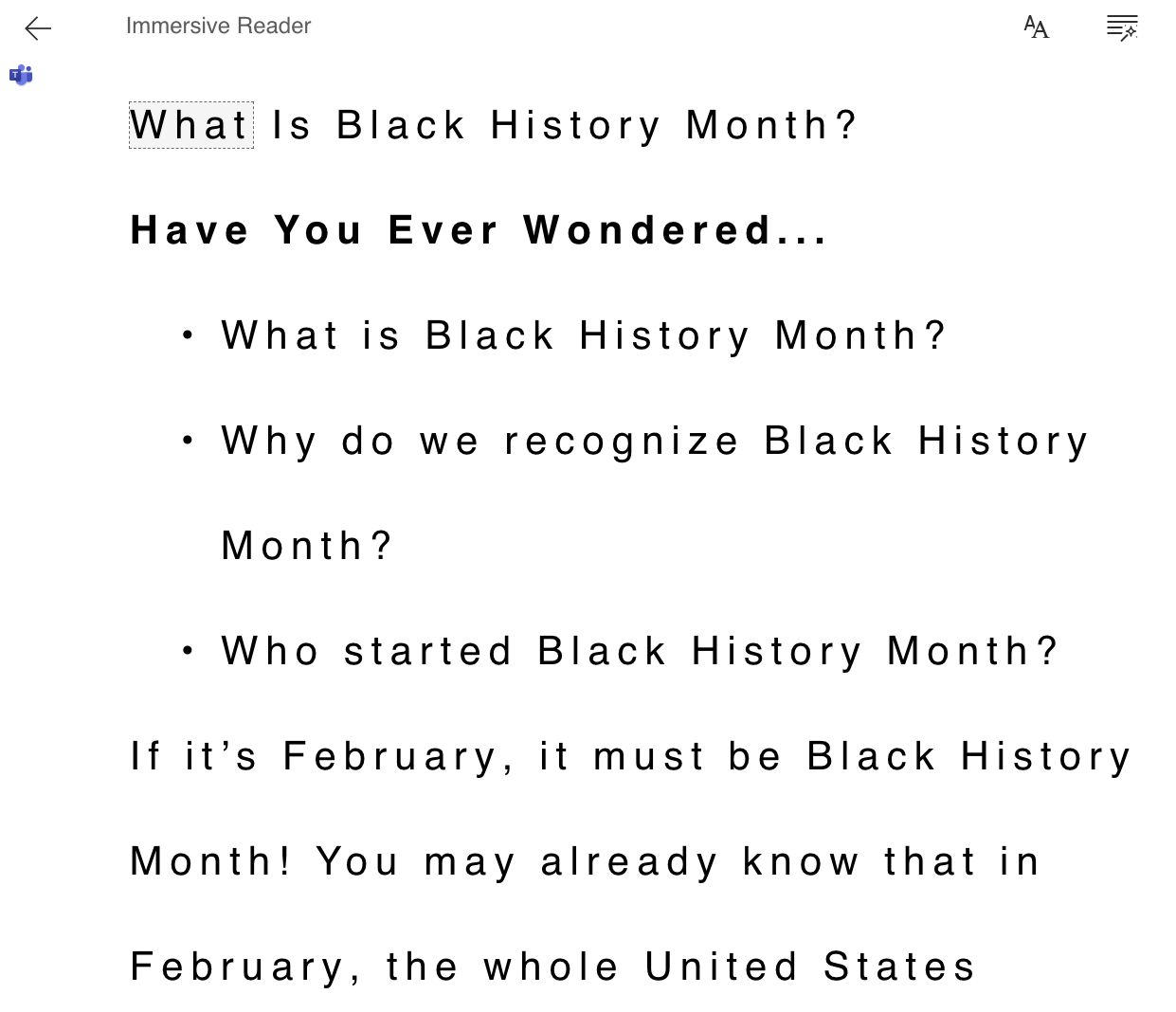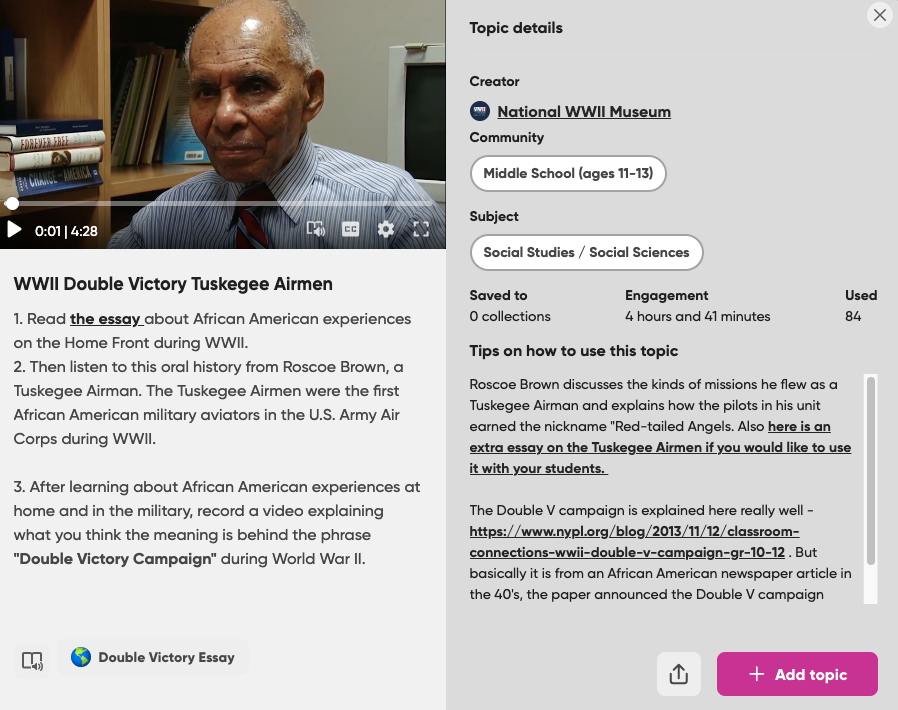In the months of January and February, educators nationwide come together to commemorate and pay tribute to the narratives of Black and African American individuals, honoring the significance of their experiences.
Microsoft Education encourages educators like you to celebrate the contributions, challenges, victories, and courageous voices during Black History Month and as an integral part of your class throughout the year.
Experienced educators have shared this practical wisdom:
- Start where you are
- Foster “windows, mirrors, and sliding glass doors” moments for you and your students
- The time is always right to learn about Black History
Develop a learner’s mindset this Black History Month
You may ask yourself, “How do I even start to make my classroom more inclusive?” The good news is that you do not need to be a social justice expert or have all the answers to make your classroom more inclusive.
Commit to a learner’s mindset alongside your students this Black History Month. “There’s nothing wrong with being vulnerable with your students and saying, ‘Hey, we’re going to learn this together,’” Dr. Natasha Rachell, Director of Instructional Technology and Co-Creator of Lessons in Good Trouble says. “That brings another human level to the content. And I think students appreciate that.”
Use one of these simple strategies to get the conversation about Black History Month started:
- Engage in discussions using Microsoft Teams for Education to help students learn how to model digital citizenship skills while participating in online discourse.
- Use Microsoft Reflect to take thoughtful breaks, consider new perspectives, and set learning goals.
- Develop information literacy skills with Search Coach—a Learning Accelerator created to assist students in developing essential information literacy skills and locating reliable and reputable resources.

Teaching about Black History Month: Steps to get started
A mixture of dedication, courage, curiosity, and proven resources such as the ones below can help you to deepen and extend Black history and social justice learning. Start small and don’t be afraid of big conversations: They only prove that students are engaged!
Here are some ideas about how you can incorporate Black and African American history into your class.
Use The King Center to teach about Black History Month
Discover the King family legacy through The King Center Timeline, a collaborative effort by Microsoft and The King Center. This unique collection features the first-ever compilation of documents, pictures, and videos showcasing Mrs. Coretta Scott King’s dedication to nonviolent social change. Dive into the timeline to spotlight pivotal moments in her life, emphasizing themes like persistence, activism, nonviolence, and the preservation of history.
Use Minecraft Education as a Black History Month teaching resource
Explore the concept of “good trouble” in Minecraft Education, an immersive learning platform built specifically for the classroom. Lessons in Good Trouble are perfect for educational activities that focus on civil rights and social justice, and were developed in a partnership between Minecraft Education, Learning for Justice, and veteran educators. Expand the experience with these other connected Minecraft worlds:
- Good Trouble: U.S. Civil Rights
- Good Trouble: Black Lives Matter
- Who is Dr. Martin Luther King, Jr.?
- The “I” in Identity

See how Wonderopolis can further Black History Month education
Tap into your students’ curiosity by sharing a Wonderopolis article. With age-appropriate posts answering “What is Black History Month?”, “Who was Ruby Bridges?”, and “What Does Juneteenth Celebrate?”, there are resources that address many of your students’ questions. Even better, students can use Microsoft Immersive Reader, a tool that makes text accessible throughout the entire site. Explore the entire Black history collection on Wonderopolis.

Celebrate Black History Month with Microsoft Flip
Explore Flip’s thoughtfully curated Celebrate Black History Flip Discovery Library Collection. This collection offers ready-to-use discussion topics that empower students to learn, honor, and celebrate Black History. The collection includes contributions from esteemed partners such as The National WWII Museum, Amplify Voices, Langston League, The Equal Justice Initiative, and more, along with submissions from educators across various grade levels and subjects.

Participate in the Learning from the Past, Shaping the Future: Discovering Black History through Digital Innovation Flip Live Event on February 21, 2024. This event provides an opportunity for students to discover how virtual museums, Flip, and AI can be used to explore and celebrate the rich and diverse heritage of Black culture in America and worldwide. Register for the event and learn more about how you can be a part of history with NASCAR driver, Rajah Caruth.
Windows, mirrors, and sliding glass doors
Students may sometimes find it challenging to relate to the names and events they study. In reality, the Civil Rights movement is a tapestry woven by ordinary individuals who took extraordinary steps in history-making ways—such as breaking barriers at a hostile school, sitting at lunch counters, and boycotting buses. Much like the ripples created by a pebble tossed into a calm pond, the effects of their actions resonate profoundly and endure in significant ways.
When you provide your students “windows, mirrors, and sliding glass doors” into the lives of historical or contemporary figures, their perspectives shift and learning gets really interesting through conversations, questions, and curiosity. Explore social justice and inclusivity through age and grade-appropriate conversations so that Black history and civil rights continue beyond Dr. Martin Luther King, Jr.’s Birthday and Black History Month.
The time is always right
“This quote keeps coming to mind, appropriately enough, from Dr. King,” says Dr. Rachell, Director of Instructional Technology and Co-Creator of Minecraft’s Lessons in Good Trouble. “‘The time is always right to do what is right.’ Whether you’re looking for something in your community or simply talking about these issues outside of this month or two, the time is always right to do what is right. There’s always a time and a place to learn about these issues and to have those age-appropriate conversations with your students. After all, we can’t move forward until we recognize and understand where we’ve been.”
When you infuse inclusivity into your curriculum, it communicates to students that Black history is a fundamental aspect of American history. This approach connects with and acknowledges the humanity of your students, establishing a space that welcomes their questions, voices, and contributions.
Microsoft invites everyone to commemorate and celebrate Black history not only during Black History Month but also throughout 2024. Explore classroom resources, engage in activities, and participate in discussions highlighting the numerous contributions, figures, and events that shape Black history.







